Story of the dinosaurs
A brief history of dinosaurs
The history of dinosaurs encompasses a long time period of diverse creatures. This piece of art is a reconstruction of a late Maastrichtian (~66 million years ago) paleoenvironment in North America, where a floodplain is roamed by dinosaurs like Tyrannosaurus rex, Edmontosaurus and Triceratops. (Image credit: Davide Bonadonna)Dinosaurs were a successful group of animals that emerged between 240 million and 230 million years ago and came to rule the world until about 66 million years ago, when a giant asteroid slammed into Earth. During that time, dinosaurs evolved from a group of mostly dog- and horse-size creatures into the most enormous beasts that ever existed on land.
Some meat-eating dinosaurs shrank over time and evolved into birds. So, in that sense, only the non-avian dinosaurs went extinct. (For the purposes of this article, "dinosaurs" will refer to non-avian dinosaurs, unless otherwise stated.)
During the roughly 174 million years that dinosaurs existed, the world changed greatly. When dinosaurs first appeared in the Triassic period (251.9 million to 201.3 million years ago), they roamed the supercontinent of Pangaea. But by the time the asteroid hit at the end of the Cretaceous period (145 million to 66 million years ago), the continents were in approximately the same place they are today.
What are dinosaurs?
The oldest unequivocal dinosaur fossils, dating to about 231 million years ago, are from Ischigualasto Provincial Park in northwestern Argentina, and include the genuses Herrerasaurus, Eoraptor and Eodromaeus. Scientists are still debating whether Nyasasaurus, a genus found in Tanzania that dates to about 240 million years ago, is also an early dinosaur or a dinosauromorph, a group that includes dinosaurs and their close relatives, said Steve Brusatte, a paleontologist at the University of Edinburgh in Scotland.
Related: Photos: Unearthing dinosauromorphs, the ancestors of dinosaurs
Whenever they first appeared, the dinosaurs' unique anatomy set them apart from other animal groups. Dinosaurs are archosaurs, a clade (different groups of animals that share a common ancestor) that includes crocodilians, pterosaurs, dinosaurs and birds. The archosaurs emerged after the end-Permian extinction about 252 million years ago. Over time, some archosaurs, including dinosauromorphs, adapted an upright posture, meaning they had legs under their bodies, rather than out to their sides.
Dinosaurs are archosaurs, a clade (different groups of animals that share a common ancestor) that includes crocodilians, pterosaurs, dinosaurs and birds. The archosaurs emerged after the end-Permian extinction about 252 million years ago. Over time, some archosaurs, including dinosauromorphs, adapted an upright posture, meaning they had legs under their bodies, rather than out to their sides.
"Sprawling is all well and good for cold-blooded critters that don't need to move very fast. Tucking your limbs under your body, however, opens up a new world of possibilities," Brusatte wrote in "The Rise and Fall of the Dinosaurs: A New History of a Lost World " (William Morrow, 2018). As archosaur evolution progressed, dinosauromorphs gained long tails, big leg muscles and extra hip bones that enabled them to move quickly and efficiently, Brusatte wrote.
Dinosaurs were likely warm blooded. Their unique anatomy, such as their strong necks and upright posture, gave them advantages over other animal groups.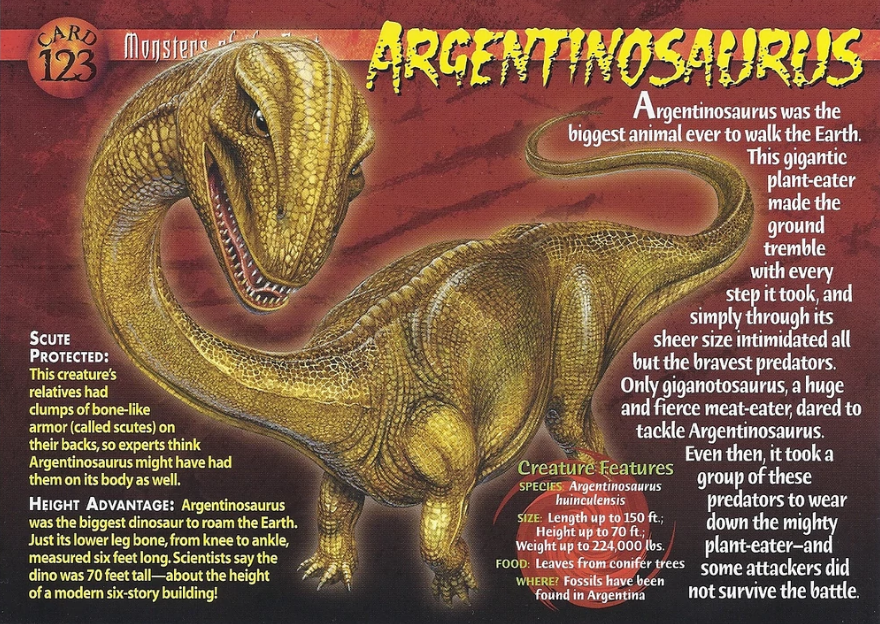 (Image credit: UNM Biology)
(Image credit: UNM Biology)
Some dinosauromorphs evolved into dinosaurs. The differences between the two are small, but dinosaurs' anatomy offered increased benefits, including arms that could move in and out, neck vertebrae that could support stronger muscles than before, and a joint where the thigh bone meets the pelvis, Brusatte wrote.
This unique anatomy helped dinosaurs become successful. Having an upright posture also freed the hands, allowing dinosaurs such as iguanodonts to grasp branches and carnivorous dinosaurs to claw and kill prey, noted Gregory Erickson, a paleobiologist at Florida State University. Ultimately, having free arms "allowed gliding then flight in birds," he said.
Moreover, dinosaurs were likely warm blooded, according to research on their growth rates. "When you become a warm blooded animal, you can operate 24/7," Erickson told Live Science. "You're not at the whims of the environment in terms of being active.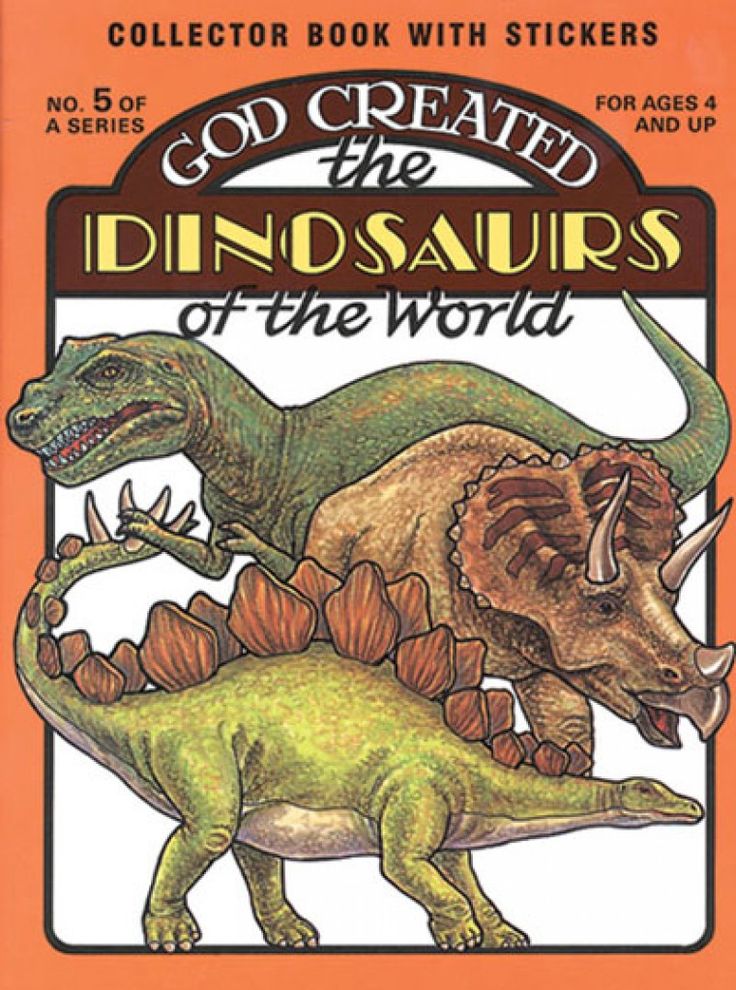 "
"
Initially, dinosaurs were not as diverse as the crocodile-like archosaurs they were living alongside, Brusatte noted. In fact, dinosaurs "didn't become too successful right away; the crocs ruled the Triassic, then the end-Triassic extinction hit and the dinosaurs survived and took over."
The clade Dinosauria (which means "terrible lizard" in Greek) was coined in 1842 by the English paleontologist Richard Owen, who included the meat-eating theropod Megalosaurus, the long-necked sauropodomorph Cetiosaurus and the ornithiscian Iguanodon as the first known species in the clade, according to the book "Dinosaurs Rediscovered " (Thames & Hudson, 2019).
Each of these dinosaurs, it turns out, represents one of the three major dinosaur groups.
Types of dinosaurs
As of 2021, there were 1,545 scientifically described dinosaur species, according to the Paleobiology Database. About 50 previously unknown species are described each year, meaning there's roughly one newfound species described each week, Brusatte said.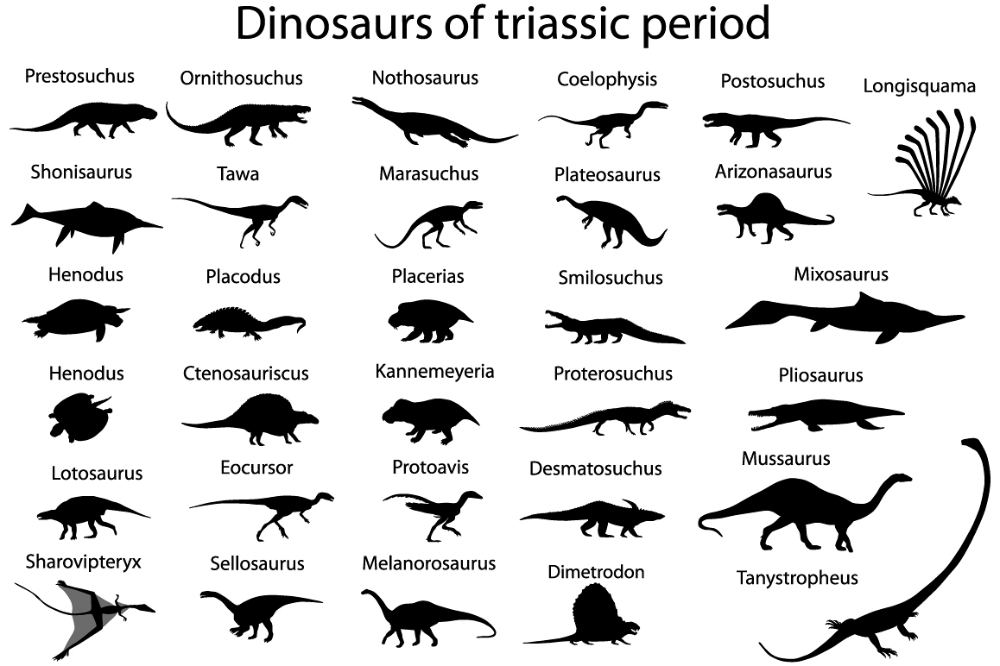
All of these dinosaurs fit into one of three groups: Ornithischia, Sauropodomorpha and Theropoda.
Ornithischia dinosaurs include beaked plant-eaters, such as Stegosaurus, duck-billed dinosaurs (also called hadrosaurs), as well as horned dinosaurs like Triceratops and armored dinosaurs like Ankylosaurus. Some ornithischians walked on four legs, while others walked on two.
Sauropodomorpha dinosaurs were long-necked, pot-bellied dinosaurs that had tiny heads and column-like limbs. This group includes sauropods (such as Diplodocus), their smaller antecedents (including Chromogisaurus) and extra-large sauropods known as titanosaurs (such as Dreadnoughtus and Argentinosaurus), which are among the largest land animals that have ever existed.
A life-scene from 232 million years ago, during the Carnian Pluvial Episode after which dinosaurs took over. A large archosaur, known as a rauisuchian, lurks in the background, while two species of dinosaurs stand in the foreground, and some rhynchosaurs sit on the logs to the left. Based on data from the Ischigualasto Formation in Argentina. (Image credit: © Davide Bonadonna)
Based on data from the Ischigualasto Formation in Argentina. (Image credit: © Davide Bonadonna)
Theropoda is a group of meat-eating dinosaurs, although some (such as Chilesaurus diegosuarezi) changed their diet to be herbivorous or omnivorous. Theropods include Tyrannosaurus rex and Velociraptor, as well as birds, which evolved from small theropods.
So, how are these groups related? It's up for debate. Ornithischian dinosaurs have a backward-pointing pubis bone in the hip, earning them the name bird-hipped dinosaurs. (However, they are not the ancestors of birds; theropods are.) Meanwhile, theropods and sauropodomorphs have saurischian or "reptile hips," which are also seen in modern crocodiles and lizards, according to the book "Dinosaurs Rediscovered."
Historically, it was thought that the reptile-hipped theropods and sauropodomorphs were more closely related to each other than to ornithischians. However, a 2017 study in the journal Nature uprooted the dinosaur family tree by suggesting that ornithischians and theropods were more closely related, based on analyses of 74 dinosaur species, Live Science previously reported.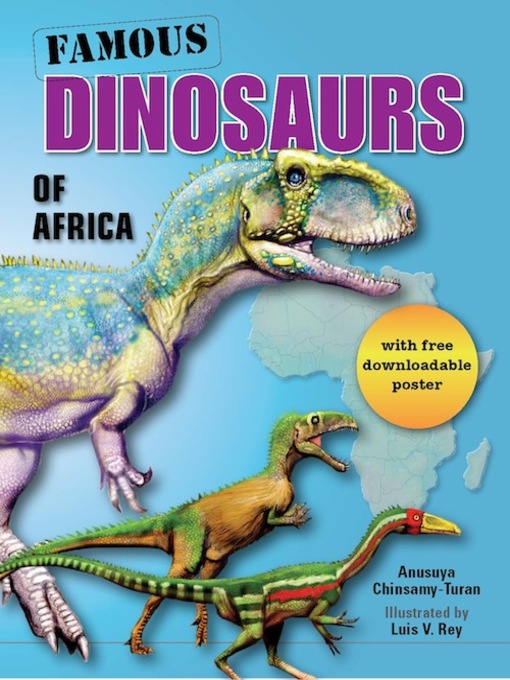 Shortly after, another 2017 study in the journal Nature found that neither family tree, as well as a third that is rarely considered, is statistically significant from the other, meaning all the suggested family trees are equally plausible until more evidence comes forth.
Shortly after, another 2017 study in the journal Nature found that neither family tree, as well as a third that is rarely considered, is statistically significant from the other, meaning all the suggested family trees are equally plausible until more evidence comes forth.
When did dinosaurs live?
Dinosaurs lived during most of the Mesozoic era, a geological age that lasted from 252 million to 66 million years ago. The Mesozoic era includes the Triassic, Jurassic and Cretaceous periods.
Dinosaurs arose from small dinosauromorph ancestors in the Triassic period, when the climate was harsh and dry. They faced "competition from the croc-line archosaurs for tens of millions of years, [but] finally prevailed when Pangaea began to split," Brusatte told Live Science. At this time, volcanoes erupted along the cracks of the supercontinent, causing global warming and mass extinction, he said.
During the Jurassic period (201.3 million to 145 million years ago), dinosaurs rose to dominance and some grew to huge sizes.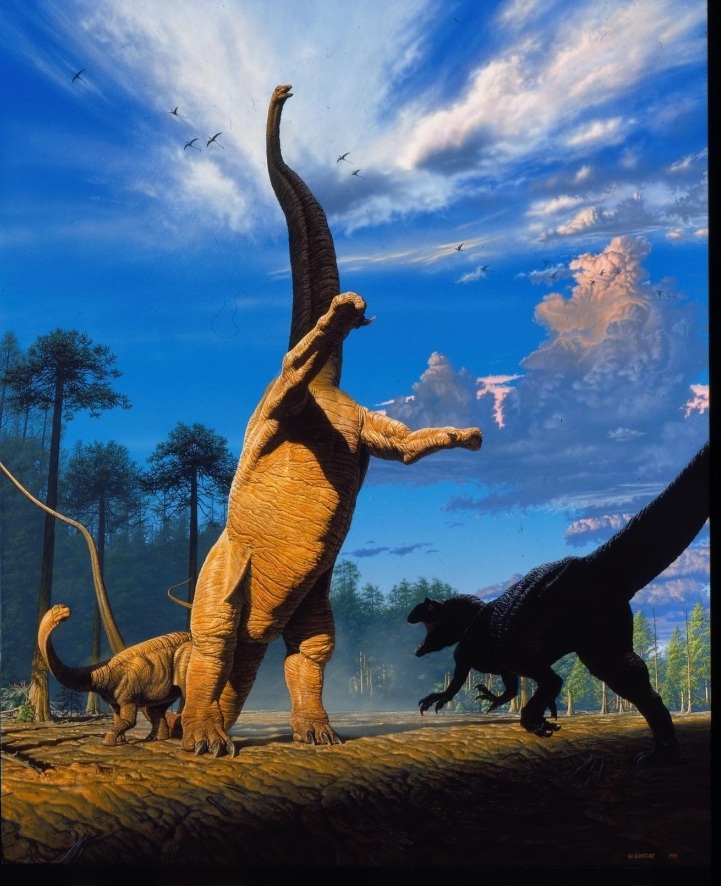 For example, Vouivria damparisensis, the earliest titanosaur, dates to 160 million years ago. It weighed about 33,000 lbs. (15,000 kilograms) and measured more than 50 feet (15 meters) long. Iconic dinosaurs from this period include Brontosaurus, Brachiosaurus, Diplodocus and Stegosaurus. During the Jurassic, flowering plants evolved and birds, including Archaeopteryx, first appeared. There was "a small extinction at the end of the Jurassic that we still know little about," Brusatte said.
For example, Vouivria damparisensis, the earliest titanosaur, dates to 160 million years ago. It weighed about 33,000 lbs. (15,000 kilograms) and measured more than 50 feet (15 meters) long. Iconic dinosaurs from this period include Brontosaurus, Brachiosaurus, Diplodocus and Stegosaurus. During the Jurassic, flowering plants evolved and birds, including Archaeopteryx, first appeared. There was "a small extinction at the end of the Jurassic that we still know little about," Brusatte said.
In the Cretaceous period, dinosaur dominance continued as the continents moved farther apart. Famous dinosaurs from this period include T. rex, Triceratops, Spinosaurus and Velociraptor. The largest dinosaurs on record, including Argentinosaurus, date to the Cretaceous. The Cretaceous period ended with the Cretaceous-Tertiary (K-Pg) extinction event, when a 6-mile-wide (10 kilometers) asteroid collided with Earth, leaving an impact crater more than 110 miles (180 km) in diameter in the Yucatan Peninsula of what is now Mexico.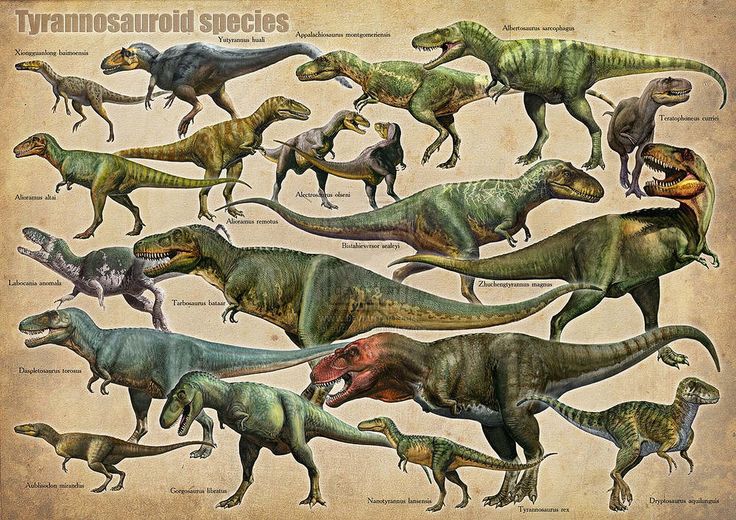
The impact area, known as the Chicxulub (CHEEK-sheh-loob) crater, has evidence of "shocked quartz" and small glass-like spheres known as tektites, which form when rock is rapidly vaporized and cooled — geologic clues that a space rock struck there with incredible force, Betsy Kruk, an associate paleontologist with Paleo Solutions, a paleontological consulting company based in California, previously told Live Science. Chemical analyses from the sedimentary rock at Chicxulub melted and mixed together at temperatures on par with an asteroid strike about 66 million years ago, she added.
What is the largest dinosaur? The smallest dinosaur?
Some dinosaurs were enormous, but others were pipsqueaks. The smallest dinosaur on record is an avian dinosaur that's alive today: the bee hummingbird (Mellisuga helenae) from Cuba, which measures just over 2 inches (5 centimeters) long and weighs less than 0.07 ounce (2 grams). As for extinct, non-avian dinosaurs, there are a few contenders for smallest beast, including a bat-like dinosaur from China named Ambopteryx longibrachium that measured 13 inches (32 cm) long and weighed about 11 oz (306 g), according to a 2019 study in the journal Nature .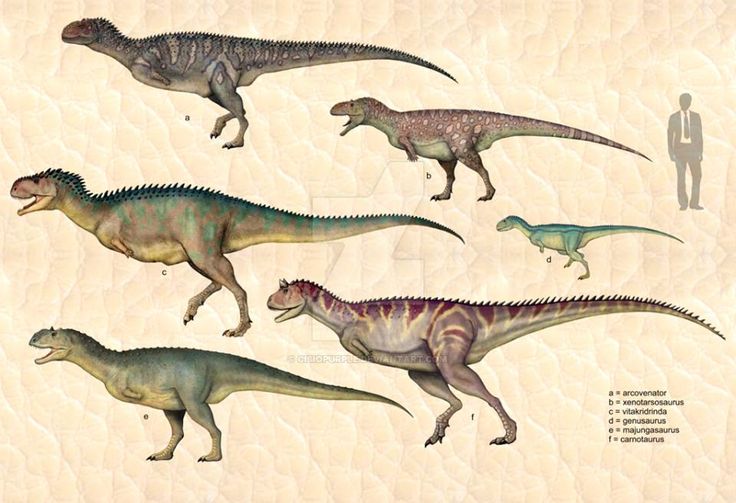
Titanosaurs were the largest dinosaurs. However, because paleontologists rarely find an entire skeleton, and because soft tissues, such as organs and muscles, rarely fossilize, it's challenging to determine dinosaur mass. However, contenders for the title of world's largest dinosaur include Argentinosaurus, which weighed up to 110 tons (100 metric tons), an unnamed 98 million-year-old titanosaur from Argentina that weighed upward of 69 tons (63 metric tons), and Patagotitan, which also weighed in at 69 tons.
The longest dinosaur was likely Supersaurus, a Jurassic sauropod that was at least 128 feet (39 meters) long, and possibly even reached 137 feet (42 m) in length, according to unpublished research presented at the Society of Vertebrate Paleontology's annual conference in 2021. Another contender is Diplodocus, a long and slender Jurassic sauropod that could reach lengths of 108 feet (33 m), according to a 2006 study in the New Mexico Museum of Natural History and Science Bulletin .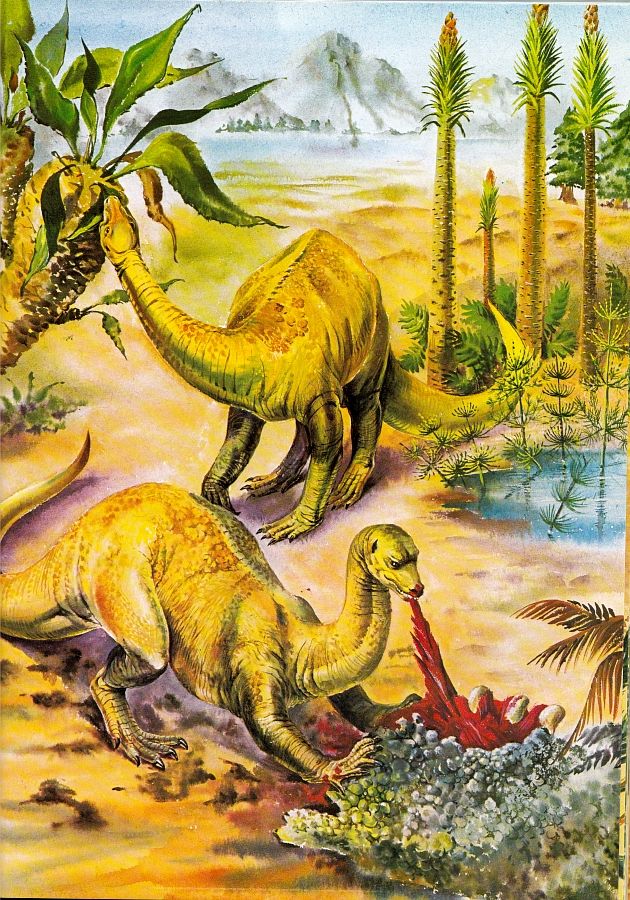
The tallest dinosaur is likely Giraffatitan, a 40-foot-tall (12 m) sauropod dinosaur from the late Jurassic, about 150 million years ago, which lived in what is now Tanzania.
Pterosaurs are not dinosaurs
Many amazing animals lived during the dinosaur age, and some are confused with dinosaurs. The most common misconception is calling pterosaurs dinosaurs: They are not. Pterosaurs are winged reptiles and archosaurs, meaning they are relatives of dinosaurs, but they are not dinosaurs.
The order Crocodilia includes extinct and living crocodiles and their close relatives. Crocodilians are archosaurs, but they are not dinosaurs. Living crocodilians and birds (which are dinosaurs) are the only surviving members of the Archosauria clade.
The Mesozoic oceans teemed with sea life, including predatory reptiles known as mosasaurs (such as Mosasaurus), plesiosaurs and ichthyosaurs. However, none of these reptiles are dinosaurs.
Did dinosaurs have feathers?
Yes, some dinosaurs flaunted feathers, as do their bird descendants.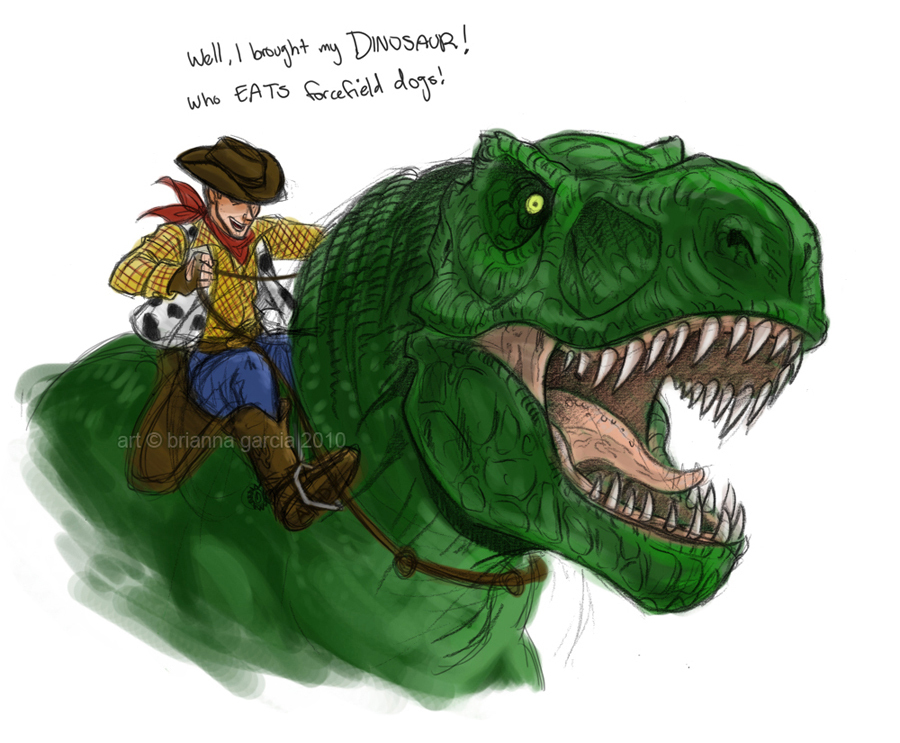 Feathers don't fossilize well, but some remarkable fossils, especially those from Liaoning province in China that were buried in the aftermath of a volcanic eruption, have preserved feathers. Here are a few examples: Zhenyuanlong suni, Yutyrannus huali and Jianianhualong tengi.
Feathers don't fossilize well, but some remarkable fossils, especially those from Liaoning province in China that were buried in the aftermath of a volcanic eruption, have preserved feathers. Here are a few examples: Zhenyuanlong suni, Yutyrannus huali and Jianianhualong tengi.
It's unclear why dinosaurs first evolved feathers, but they could have been used for the following: as insulation to keep dinosaurs and their incubated eggs warm; for display to use for communication between dinosaurs, such as courtship displays; and for gliding or powered flight, Michael Habib, a research associate at the Dinosaur Institute at the Natural History Museum of Los Angeles County, previously told Live Science.
Initially, it was thought that only theropods and their descendants sported feathers, but researchers have also found downy feathers on the plant-eating ornithischian dinosaur Kulindadromeus zabaikalicus, suggesting that feathers were more widespread than previously thought, a 2014 study in the journal Science found.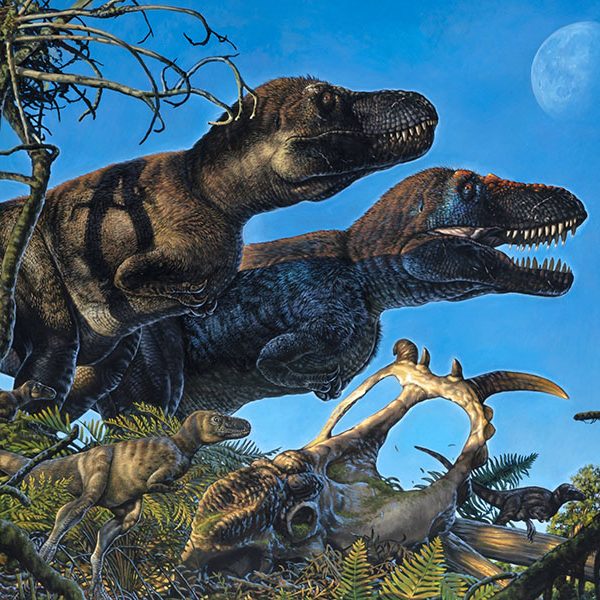
It's possible that pterosaurs had feathers, according to a 2018 study in the journal Nature Ecology & Evolution , but more feathered specimens need to be found and analyzed to say so for sure.
Notably, even T. rex had feathers. However, depictions of dinosaurs rarely have feathers in popular culture, including the "Jurassic Park" movies. Paleontologist Jack Horner, who served as a scientific adviser on some of the "Jurassic Park" movies, remembers telling director Steven Spielberg that the dinosaurs should have feathers.
"Even when 'Jurassic Park' came out [in 1993], we knew that Velociraptors should have feathers, but at that time, it would have been technically difficult to do it, just from a CG [computer-generated] point of view. And Steven wasn't really too excited about it, anyway. When I told him they should be colorful and they should be feathered, and he said, 'Feathered Technicolor dinosaurs aren't scary enough,'" Horner previously told Live Science.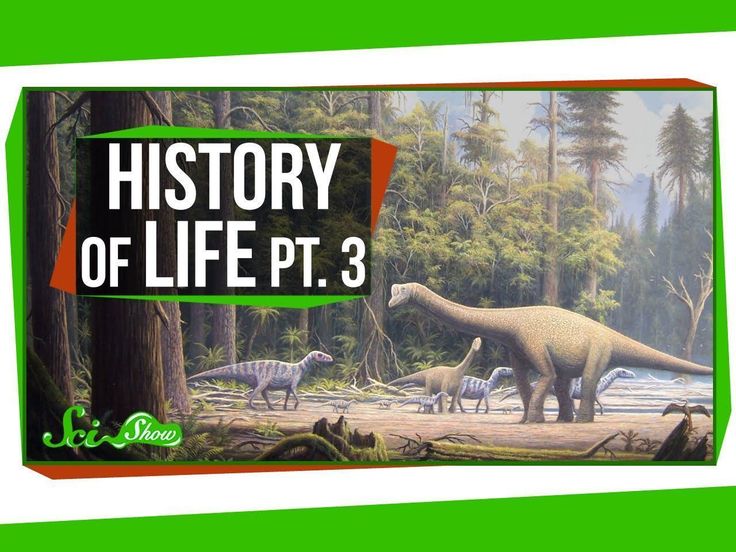
Could dinosaurs fly?
Some dinosaurs could fly, including the earliest known bird — Archaeopteryx — discovered in Germany and dating to about 150 million years ago, during the late Jurassic.
However, unlike most birds today, extinct dinosaurs likely just flew short distances. Research shows that powerful leg muscles, big wings and a relatively small body size were needed for takeoff and flight in ancient birds and bird-like dinosaurs, Habib previously told Live Science. His research suggests that the bird-like dinosaurs Microraptor, Rahonavis, and five avian genuses — Archaeopteryx, Sapeornis, Jeholornis, Eoconfuciusornis and Confuciusornis — would have been able to launch (without running) from the ground to initiate flight.
The bat-like dinosaur Yi qi, dating to China's Jurassic period, had wings, according to a 2015 study in the journal Nature . However, it likely didn't have powered flight and was probably a terrible glider, a 2020 study in the journal iScience found.
Why did dinosaurs go extinct?
It's up for debate how well the dinosaurs were doing before the asteroid crashed into Earth. A handful of studies suggest that in the late Cretaceous, dinosaur extinctions were rising and diversity was declining, especially among herbivorous dinosaurs. But these studies rely on incomplete fossil data and models that may not tell the whole story, Live Science previously reported.
Even if dinosaur diversity was dropping, it's possible they could have bounced back had the asteroid not hit, Brusatte told Live Science. Dinosaurs lived on every continent, including Antarctica, and they filled different rungs in various ecosystems, from plant-eater to apex carnivore.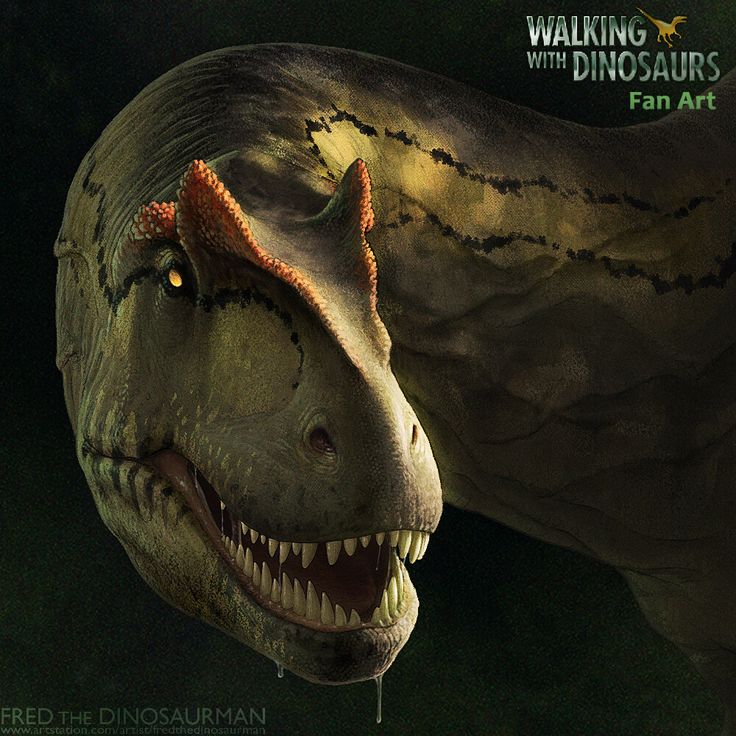 "Dinosaurs had experienced many rises and falls in diversity over their 150-plus million year evolutionary history," he said. If the mass extinction hadn't happened, it's possible "They would still be thriving today as more than birds."
"Dinosaurs had experienced many rises and falls in diversity over their 150-plus million year evolutionary history," he said. If the mass extinction hadn't happened, it's possible "They would still be thriving today as more than birds."
In the aftermath of the asteroid collision, long-term pain followed chaos. The collision caused massive destruction, including a shockwave, heat pulse, wildfires, tsunamis (including an immediate mile-high tsunami), volcanic eruptions, lethal acid rain and earthquakes. Dust and grime that the asteroid kicked up hovered in the air. "This rain of hot dust raised global temperatures for hours after the impact, and cooked alive animals that were too large to seek shelter," according to Kruk. "Small animals that could shelter underground, underwater, or perhaps in caves or large tree trunks, may have been able to survive this initial heat blast."
The dust and particles remained in the air, blocking the sun for several years afterward and causing a nuclear winter that cooled the planet and led to the deaths of countless plants and animals, Brusatte and Kruk said.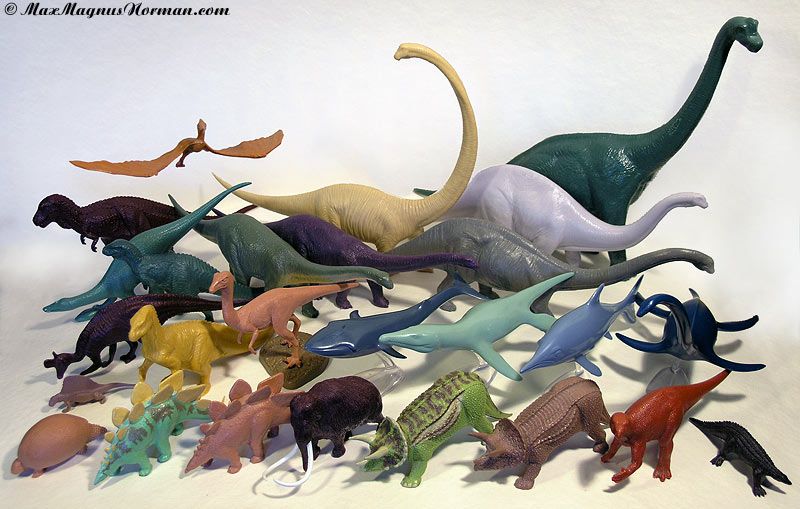
"Smaller, omnivorous terrestrial animals, like mammals, lizards, turtles, or birds, may have been able to survive as scavengers feeding on the carcasses of dead dinosaurs, fungi, roots and decaying plant matter, while smaller animals with lower metabolisms were best able to wait the disaster out," Kruk previously said. Moreover, the asteroid also pulverized carbon-rich rocks, which released carbon into the atmosphere and led to "global warming for a few thousand years," after the nuclear winter ended, Brusatte said.
Scientists used to wonder if the Deccan Traps volcanic eruptions in what is now India played a role in the mass extinction. But recent studies "show that the Deccan probably had very little impact," Brusatte said. It was "most likely an innocent bystander" — the asteroid is what caused the extinction.
Can dinosaurs be brought back?
In the popular movie franchise "Jurassic Park," scientists find dinosaur DNA preserved in an ancient mosquito caught in amber, and then fill in the DNA gaps with frog DNA.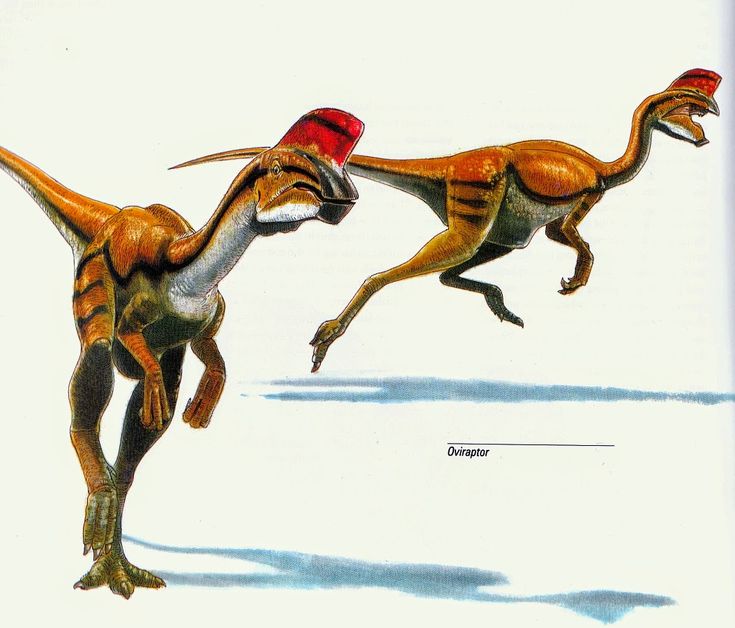 It's an entertaining plot, but the science is far from sound. For instance, amber does not preserve DNA well, and frogs are not at all closely related to dinosaurs; they're not archosaurs, and a 2017 study in the journal Proceedings of the National Academy of Sciences even found that frog evolution took off after the asteroid impact.
It's an entertaining plot, but the science is far from sound. For instance, amber does not preserve DNA well, and frogs are not at all closely related to dinosaurs; they're not archosaurs, and a 2017 study in the journal Proceedings of the National Academy of Sciences even found that frog evolution took off after the asteroid impact.
For myriad reasons, it's currently impossible to bring extinct dinosaurs back. While dinosaur proteins and blood vessels have been found, scientists have yet to rigorously identify DNA from an extinct dinosaur. DNA begins decaying the moment an organism dies, but parts of it can be preserved in the right circumstances. That said, the oldest sequenced DNA on record belongs to a roughly 1 million-year-old mammoth, and dinosaurs went extinct about 66 million years ago.
Some scientists are studying how to reverse-engineer birds into dinosaurs, including the so-called "dino-chicken," which would have a lengthened tail, teeth, arms and fingers.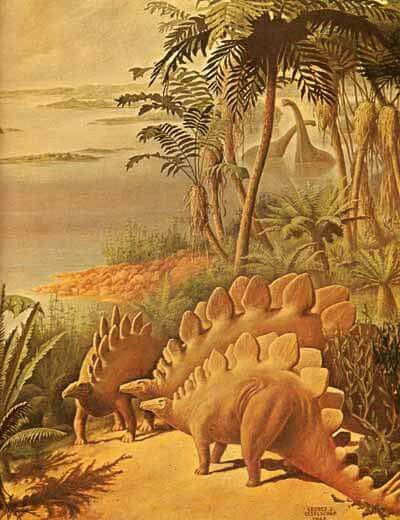 One group even gave chicken embryos dinosaur-like snouts. However, the "chickenosaurus" wouldn't be a replica of an ancient dinosaur, but rather a dinosaur-like bird, the researchers told Live Science.
One group even gave chicken embryos dinosaur-like snouts. However, the "chickenosaurus" wouldn't be a replica of an ancient dinosaur, but rather a dinosaur-like bird, the researchers told Live Science.
Additional resources
- Look up your favorite dinosaur on the Dino Directory from the Natural History Museum in London.
- Learn amazing dinosaur facts from the American Museum of Natural History in New York City.
- Take free, online college-level classes about the dinosaurs on Coursera, including "Dino 101: Dinosaur Paleobiology " and "Paleontology: Theropod Dinosaurs and the Origin of Birds ."
Laura is the archaeology/history and Life's Little Mysteries editor at Live Science. She also reports on general science, including archaeology and paleontology. Her work has appeared in The New York Times, Scholastic, Popular Science and Spectrum, a site on autism research. She has won multiple awards from the Society of Professional Journalists and the Washington Newspaper Publishers Association for her reporting at a weekly newspaper near Seattle.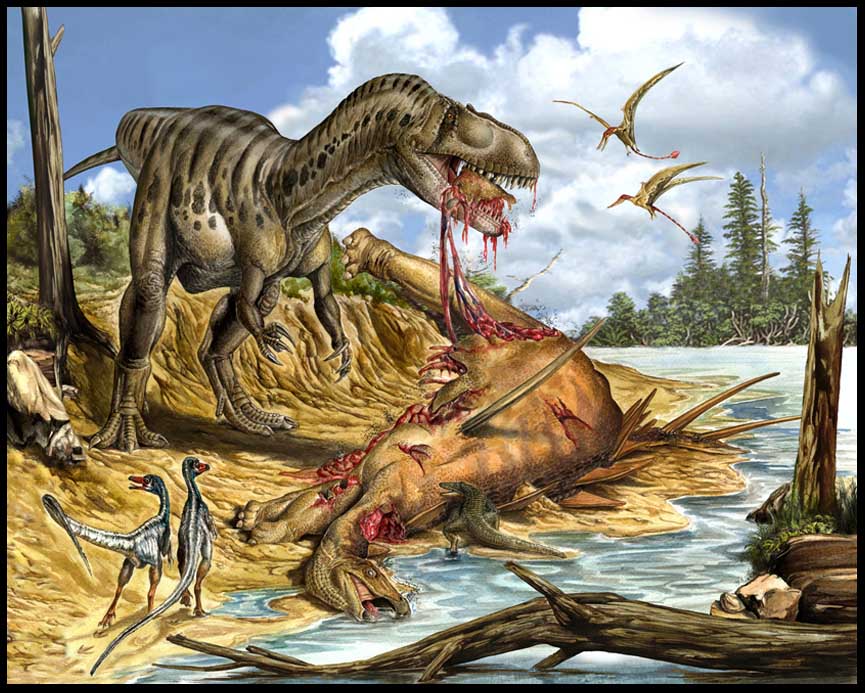 Laura holds a bachelor's degree in English literature and psychology from Washington University in St. Louis and a master's degree in science writing from NYU.
Laura holds a bachelor's degree in English literature and psychology from Washington University in St. Louis and a master's degree in science writing from NYU.
Dinosaurs - Extinction, Timeline & Definition
The prehistoric reptiles known as dinosaurs arose during the Middle to Late Triassic Period of the Mesozoic Era, some 230 million years ago. They were members of a subclass of reptiles called the archosaurs (“ruling reptiles”), a group that also includes birds and crocodiles.
Scientists first began studying dinosaurs during the 1820s, when they discovered the bones of a large land reptile they dubbed a Megalosaurus (“big lizard”) buried in the English countryside. In 1842, Sir Richard Owen, Britain’s leading paleontologist, first coined the term “dinosaur.” Owen had examined bones from three different creatures–Megalosaurus, Iguanadon (“iguana tooth”) and Hylaeosaurus (“woodland lizard”). Each of them lived on land, was larger than any living reptile, walked with their legs directly beneath their bodies instead of out to the sides and had three more vertebrae in their hips than other known reptiles. Using this information, Owen determined that the three formed a special group of reptiles, which he named Dinosauria. The word comes from the ancient Greek word deinos (“terrible”) and sauros (“lizard” or “reptile”).
Using this information, Owen determined that the three formed a special group of reptiles, which he named Dinosauria. The word comes from the ancient Greek word deinos (“terrible”) and sauros (“lizard” or “reptile”).
Did you know? Despite the fact that dinosaurs no longer walk the Earth as they did during the Mesozoic Era, unmistakable traces of these enormous reptiles can be identified in their modern-day descendants: birds.
Since then, dinosaur fossils have been found all over the world and studied by paleontologists to find out more about the many different types of these creatures that existed. Scientists have traditionally divided the dinosaur group into two orders: the “bird-hipped” Ornithischia and the “lizard-hipped” Saurischia. From there, dinosaurs have been broken down into numerous genera (e.g. Tyrannosaurus or Triceratops) and each genus into one or more species. Some dinosaurs were bipedal, which means they walked on two legs. Some walked on four legs (quadrupedal), and some were able to switch between these two walking styles.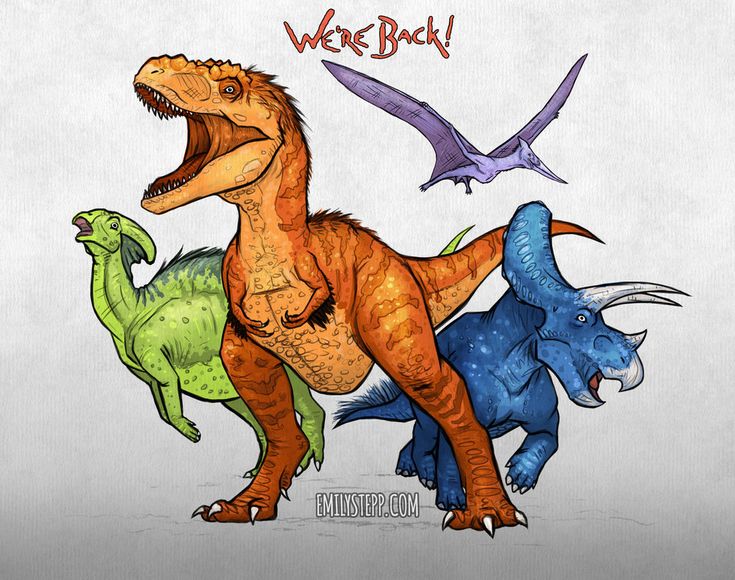 Some dinosaurs were covered with a type of body armor, and some probably had feathers, like their modern bird relatives. Some moved quickly, while others were lumbering and slow. Most dinosaurs were herbivores, or plant-eaters, but some were carnivorous and hunted or scavenged other dinosaurs in order to survive.
Some dinosaurs were covered with a type of body armor, and some probably had feathers, like their modern bird relatives. Some moved quickly, while others were lumbering and slow. Most dinosaurs were herbivores, or plant-eaters, but some were carnivorous and hunted or scavenged other dinosaurs in order to survive.
Scroll to Continue
At the time the dinosaurs arose, all of the Earth’s continents were connected together in one land mass, now known as Pangaea, and surrounded by one enormous ocean. Pangaea began to break apart into separate continents during the Early Jurassic Period (around 200 million years ago), and dinosaurs would have seen great changes in the world in which they lived over the course of their existence. Dinosaurs mysteriously disappeared at the end of the Cretaceous Period, around 65 million years ago. Many other types of animals, as well as many species of plants, died out around the same time, and numerous competing theories exist as to what caused this mass extinction.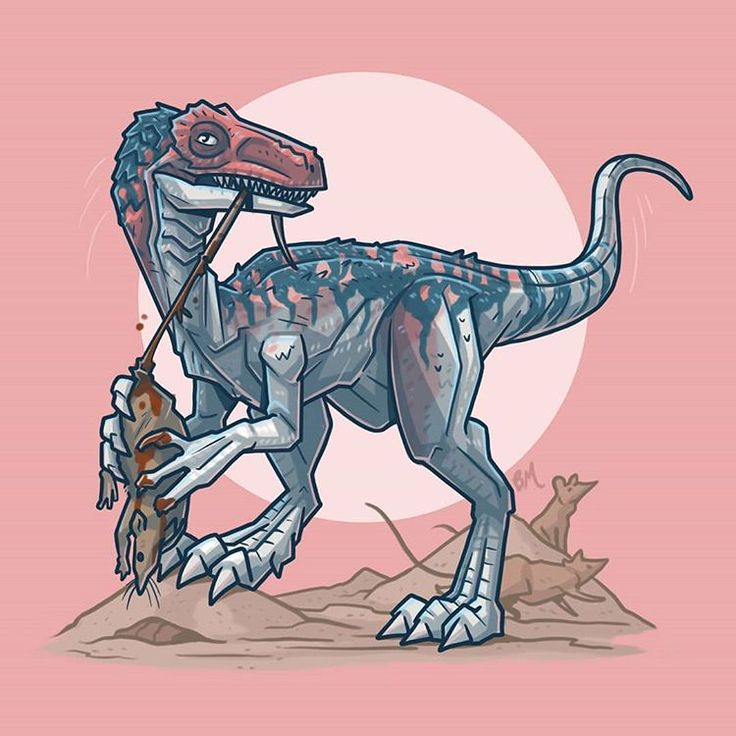 In addition to the great volcanic or tectonic activity that was occurring around that time, scientists have also discovered that a giant asteroid hit Earth about 65.5 million years ago, landing with the force of 180 trillion tons of TNT and spreading an enormous amount of ash all over the Earth’s surface. Deprived of water and sunlight, plants and algae would have died, killing off the planet’s herbivores; after a period of surviving on the carcasses of these herbivores, carnivores would have died out as well.
In addition to the great volcanic or tectonic activity that was occurring around that time, scientists have also discovered that a giant asteroid hit Earth about 65.5 million years ago, landing with the force of 180 trillion tons of TNT and spreading an enormous amount of ash all over the Earth’s surface. Deprived of water and sunlight, plants and algae would have died, killing off the planet’s herbivores; after a period of surviving on the carcasses of these herbivores, carnivores would have died out as well.
Despite the fact that dinosaurs no longer walk the Earth as they did during the Mesozoic Era, unmistakable traces of these enormous reptiles can be identified in their modern-day descendants: birds. Dinosaurs also live on in the study of paleontology, and new information about them is constantly being uncovered. Finally, judging from their frequent appearances in the movies and on television, dinosaurs have a firm hold in the popular imagination, one realm in which they show no danger of becoming extinct.
A Brief History of Dinosaurs - FacePla.net Ecological Digest
Many people think that dinosaurs are big, ferocious and extinct reptiles. For the most part, this is true, but there are also a number of misconceptions. Dinosaurs existed in many shapes and sizes. They were the largest land animals of all time, but a large number of dinosaurs were smaller than a turkey.
Dinosaurs first appeared about 230 million years ago and ruled our planet for about 135 million years until a mass extinction wiped them off the face of the Earth 65 million years ago. Only bird-like species survived. Scientists do not know exactly what happened in those ancient times, but the most likely causes included the fall of an asteroid, the saturation of the atmosphere with asphyxiating gases due to volcanic eruptions, climate change, and possibly other factors.
In the air
However, only the large, classic species became extinct.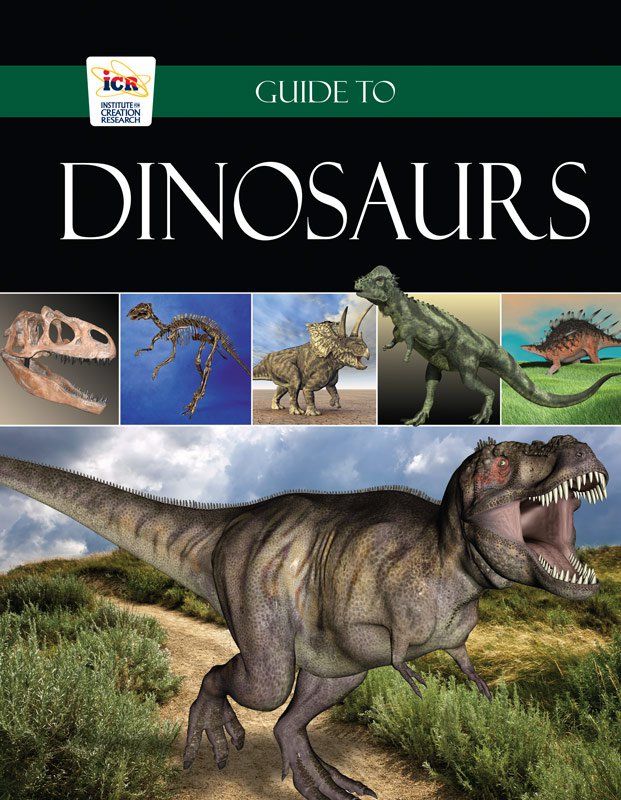 Modern birds are living dinosaurs, according to many experts. Remember this the next time you see a dove.
Modern birds are living dinosaurs, according to many experts. Remember this the next time you see a dove.
Fossils show that some of the most advanced dinosaurs had feathers or feather-like body coverings, but many of them did not fly and may not even have glide. Archeopteryx, long considered the first bird (although that status is now in doubt), is the most famous example. The feathers of this bird-like dinosaur turned out to be not so much an adaptation for flight as they helped the animal to keep warm.
Many people believe that the extinct flying reptiles called pterosaurs were dinosaurs. In fact, they were only their closest relatives. Pterosaurs had hollow bones, relatively large brains and eyes, and, of course, folds of skin along the upper limbs attached to the knuckles. The family includes pterodactyls, which were distinguished by a long bone process on the head and the absence of teeth. Pterosaurs existed until the mass extinction 65 million years ago, after which they suffered the fate of dodo birds, marine reptiles and other dinosaurs.
Difference in hip bones
Dinosaur fossils were first discovered in the 19th century. In 1842, paleontologist Richard Owen coined the term, which comes from the Greek "deinos" - "terrible" or "terrifyingly huge" and "sauros" - "lizard" or "reptile". Scientists classify dinosaurs into two groups - lizard and ornithischians, based on the structure of the animal's pelvic bones.
Most of the well-known dinosaurs, including Tyrannosaurus Rex, Deinonychus and Velociraptor, belong to the group of lizard dinosaurs. The pelvic bones of these animals are extended forward, as in more primitive creatures. They often had a long neck, large and sharp teeth, a long second finger, and the first finger was pointing perpendicular to the others.
Lizards are divided into two subgroups - four-legged herbivorous sauropods and bipedal predatory theropods (today's birds are actually theropods).
Theropods walked on two legs and were predators. "Theropod" means "beastfoot" and these were the most fearsome and most expressive dinosaurs, such as allosaurs and tyrannosaurs.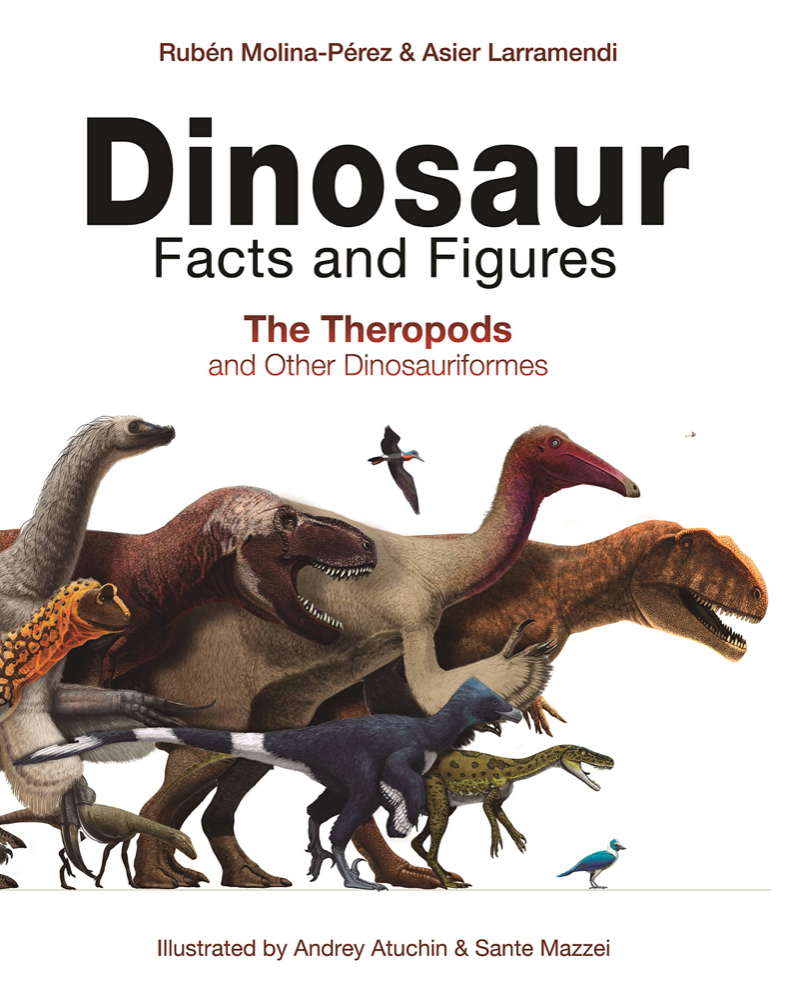
Scientists have tried to figure out whether such large theropods as gigantosaurs and spinosaurs were actively hunting, or whether they simply ate skeletons. Evidence indicates that these animals were unscrupulous hunters: they could grab prey, but did not disdain fallen animals. When archaeologists discovered the marked bones, they wondered if the theropods were cannibals. It turned out that the animals could feast on the fallen representatives of their species, but did not actively hunt each other.
Sauropods were herbivores with long necks and tails. They were among the largest animals that ever existed on our planet, but their brains were obviously very small. This family includes slow-moving leaf-eating giants such as Apatosaurus, Brachiosaurus, and Diplodocus.
Ornithischians
Meek plant eaters include animals such as the horned Triceratops, the spiny Stegosaurus and the armored Ankylosaurus.
A distinctive feature of these herbivorous species is the presence of a beak.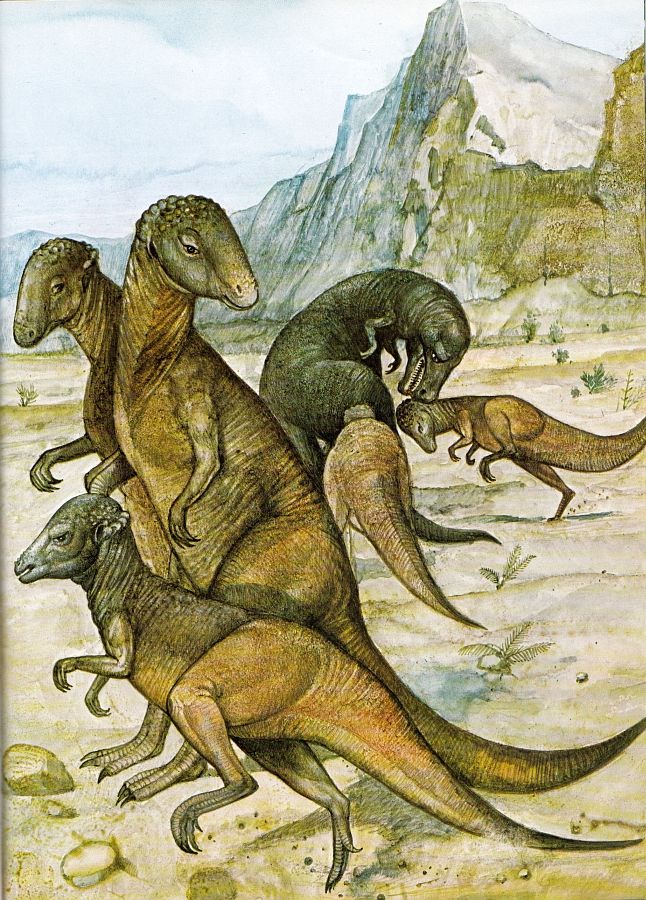 They were smaller than sauropods, led a gregarious life and often fell prey to large dinosaurs. Interestingly, ornithischians have changed their mode of locomotion from bipedal to quadrupedal at least three times in their evolutionary history.
They were smaller than sauropods, led a gregarious life and often fell prey to large dinosaurs. Interestingly, ornithischians have changed their mode of locomotion from bipedal to quadrupedal at least three times in their evolutionary history.
Marine reptiles
In the age of dinosaurs, a lot happened under the surface of the ocean. The seas abounded with creatures such as ichthyosaurs, predators reminiscent of today's tunas and dolphins. This numerous subclass of marine reptiles almost completely died out at the end of the Jurassic.
Source: Livescience
- pigeons
- dinosaurs
- sauropods
- reptiles
- pelvic bones
- theropods
Read online “A Brief History of the Dinosaurs”, A. E. Chegodaev – LitRes
© LLC AST Publishing House, 2019
How it all began
The entire history of the Earth has four and a half billion years. During this time, the face of the Earth changed unrecognizably many times.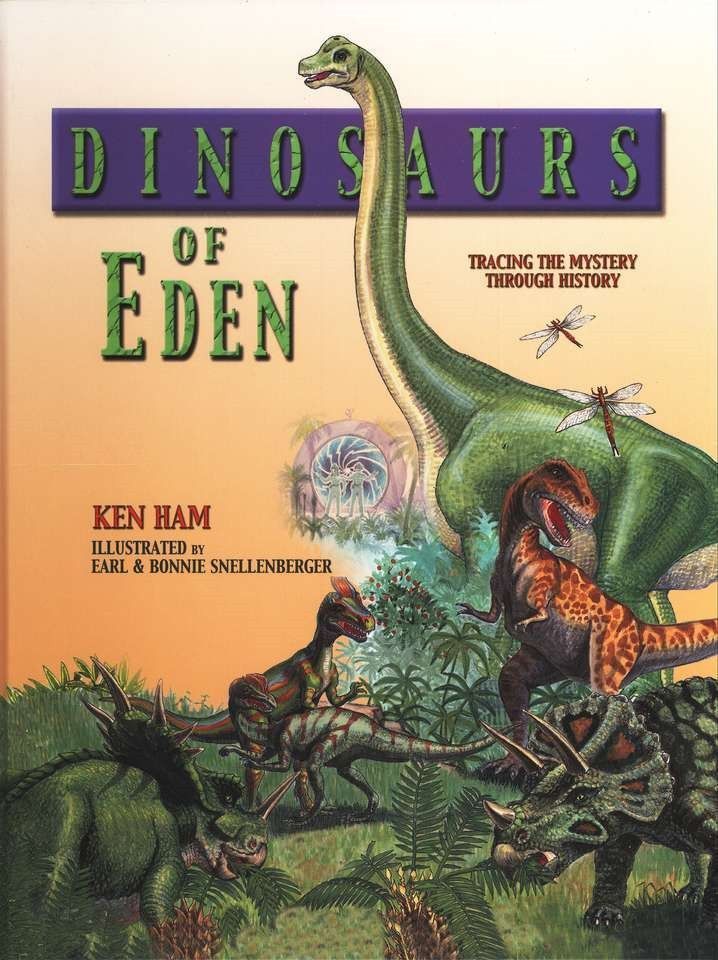 There was a time when the surface of the planet was covered with boiling volcanoes. From collisions with large cosmic bodies - meteorites - traces of funnels have forever remained on Earth. In other periods, a significant part of it was chained by powerful glaciers. At the very beginning of the Earth's history, there was almost no oxygen in the atmosphere, and in later epochs, its level rose even higher than today. Over millions of years, giant mountain ranges have repeatedly arisen, which subsequently collapsed and were erased into sand. The outlines of the continents also changed. Either they merged into a huge single supercontinent, or they diverged for many thousands of kilometers, separated by seas and oceans. Along with this, the outlines of the oceans and seas also changed. There was a time when the seas were shallow, well warmed by the sun, and many living creatures lived and flourished in them. They shallowed, exposing large areas of land that were inhabited by terrestrial organisms.
There was a time when the surface of the planet was covered with boiling volcanoes. From collisions with large cosmic bodies - meteorites - traces of funnels have forever remained on Earth. In other periods, a significant part of it was chained by powerful glaciers. At the very beginning of the Earth's history, there was almost no oxygen in the atmosphere, and in later epochs, its level rose even higher than today. Over millions of years, giant mountain ranges have repeatedly arisen, which subsequently collapsed and were erased into sand. The outlines of the continents also changed. Either they merged into a huge single supercontinent, or they diverged for many thousands of kilometers, separated by seas and oceans. Along with this, the outlines of the oceans and seas also changed. There was a time when the seas were shallow, well warmed by the sun, and many living creatures lived and flourished in them. They shallowed, exposing large areas of land that were inhabited by terrestrial organisms. Then the land was again flooded by the sea and was under water for many millions of years.
Then the land was again flooded by the sea and was under water for many millions of years.
Where forests now roar, where roads are laid and houses rise, millions of years ago storms of ancient seas raged.
Throughout the history of the Earth, a myriad of living creatures have changed, inhabiting it. Life originated about 3.5 billion years ago in the ocean. The youngest population on the planet is terrestrial. It is only less than 500 million years old. It is hard to imagine that there was a time when the land of the planet was absolutely lifeless. After the emergence of life, only the ocean was inhabited for 3 billion years.
Since the history of the Earth is very heterogeneous and mosaic, paleontologists distinguish three important stages in it.
Thus, the huge fragments of the primary supercontinent Pangea gradually “scattered”
The first of them is azoy (from the Greek “zoe” – life, “a” – negation), that is, the time of complete absence of life.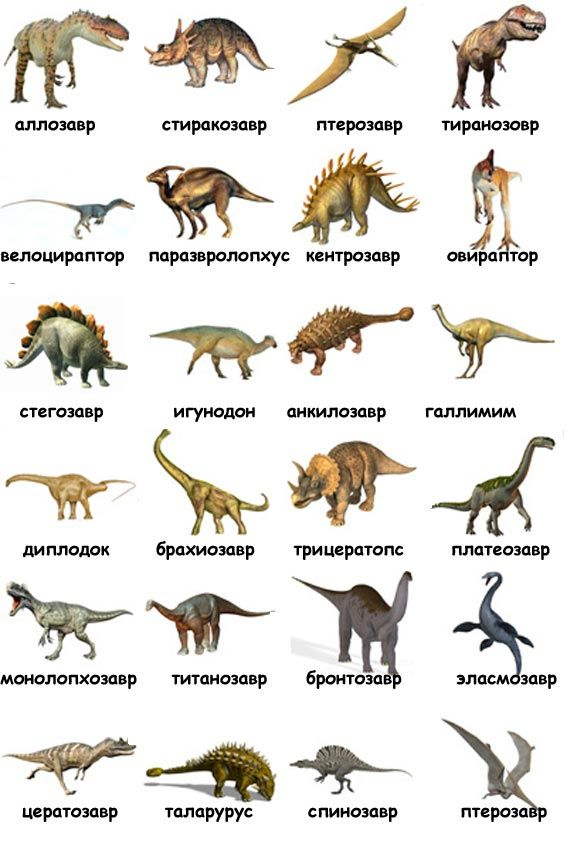
The second segment of the geological history of the Earth is called cryptosis (from the Greek "cryptos" - hidden) - the time of hidden life. The living organisms of this time are the least known to us.
And finally, the third stage - Phanerozoic (from the Greek "Phaneros" - manifest) - the time of manifest life.
These stages are divided, in turn, into eras, eras into periods, periods into eras, eras into centuries. The geological age is by no means a hundred years, but that period of time during which there was a certain composition of animals and plants inherent only to it, which were forever imprinted in the stone chronicle of the Earth. Therefore, these segments are not equal.
Pages of life
During the Cryptozoic, the ocean was inhabited by many living creatures. But only calcareous structures of algae and imprints of soft bodies of shellless bizarre organisms remained from them, the position of which in the system of the animal world remains a mystery.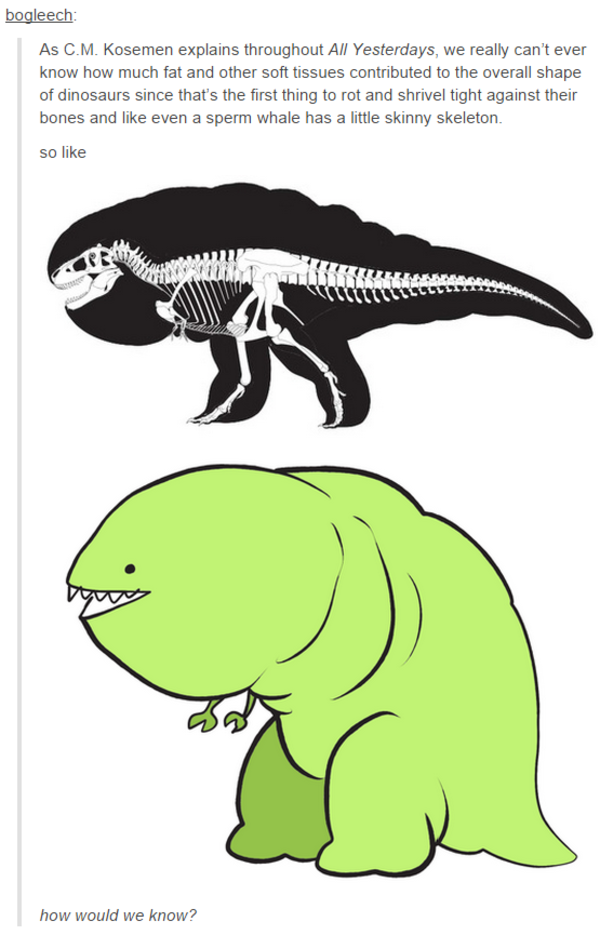 Then came the "explosion of fossils": in the ocean about 570 million years ago, animals appeared that had shells, shells and skeletons, which have come down to us in a fossilized form. Thus began the next stage in the history of the Earth - the time of apparent life.
Then came the "explosion of fossils": in the ocean about 570 million years ago, animals appeared that had shells, shells and skeletons, which have come down to us in a fossilized form. Thus began the next stage in the history of the Earth - the time of apparent life.
Scheme of the development of life
It is divided into three eras: the Paleozoic (from the Greek "palaios" - ancient) - the era of ancient life, the Mesozoic (from the Greek "mesos" - middle) - the era of middle life and the Cenozoic (from the Greek "kainos "- new) - the era of new life.
Moreover, each era is divided into a number of periods. There were twelve of them in the Phanerozoic: six in the Paleozoic, three in the Mesozoic, and three periods in the Cenozoic.
At the origins of the Paleozoic
The most ancient period of the Paleozoic era is the Cambrian, or Cambrian (from the name of the Cambrian Mountains in Wales). It began 570 million years ago. It is from this time that the history of life on Earth begins, captured in the form of shells and skeletons.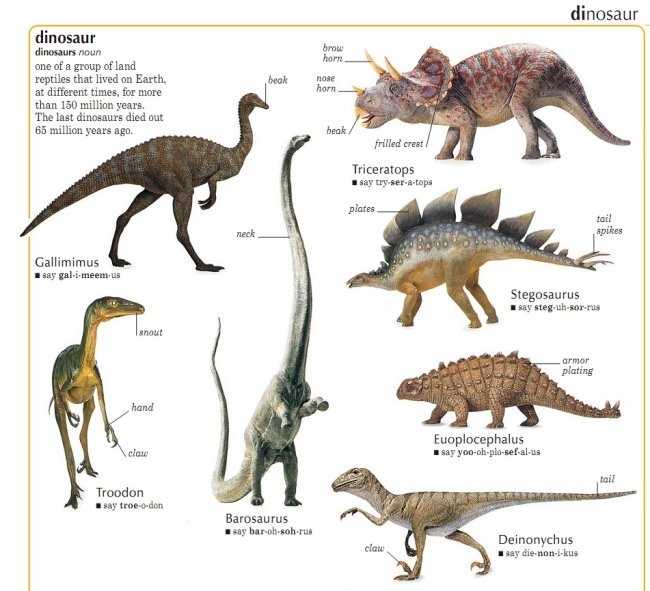
Cambrian seabed
Recall that at the end of the Cryptozoic there were no animals that had shells or shells. And suddenly, in the Cambrian, a wide variety of animals appear, each with its own special shell or shell.
Animals that built reefs
Large cups of sponges rose at the bottom. A few corals and sponges took part in the construction of reefs. Among the reefs huddled a wide variety of organisms. Here were sponges, and algae, and echinoderms (sea lilies, carpoids, etc.), and many other marine life. Algae, sea lilies, and also bryozoans formed "thickets" on open areas of the gently sloping bottom. Bivalve mollusks, brachiopods, sat in small groups nearby.
Trilobites, the first crustaceans and snails slowly crawled along the bottom. Bivalve mollusks burrowed into the loose soil. Various worms swarming in the same place, which did not have solid skeletons and shells, and therefore we can judge them only by the remaining minks and passages. Umbrella-shaped jellyfish, sun-like unicellular rhizopods, small crustaceans and other animals with light gelatinous bodies “floated” in the water column, which, not resisting the movement of water currents, were carried away by water over great distances.
Umbrella-shaped jellyfish, sun-like unicellular rhizopods, small crustaceans and other animals with light gelatinous bodies “floated” in the water column, which, not resisting the movement of water currents, were carried away by water over great distances.
Colonies of marine animals – graptolites – were floating on the very surface of the water. They were skilled seafarers, although they did not have any devices on their bodies for this. But on top of the colony was crowned with one or more thin bags filled with gases, with the help of which the graptolites, like in a balloon, rose to the water surface. From the bags filled with gas, rods departed in different directions, like rays of the sun, on which these animals sat. So the “balloon” floated, carried by waves across the endless expanses of the Cambrian ocean.
Cambrian animals were also good swimmers. These are cephalopods - nautiloids. They confidently traveled in their multi-chamber shell across the sea. The shell of some of them was straight, like an arrow, while others were twisted into a spiral.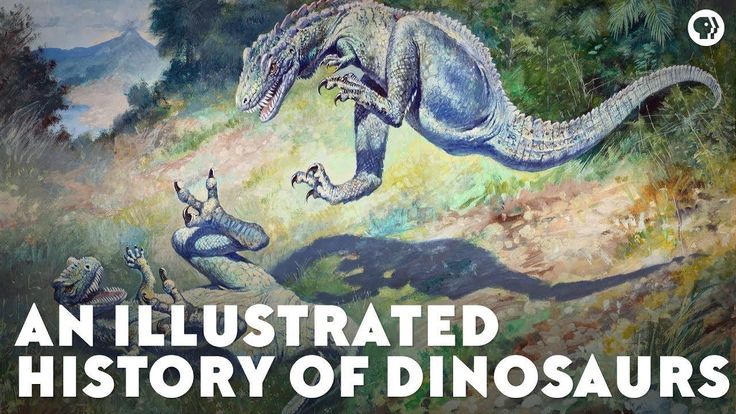
And in the Cambrian time, animals lived in the seas, which have no analogues among all known animals. These are the so-called problematic fossils. Only now, unlike the Cryptozoic ones, they have acquired shells. These animals resembled bizarre crustaceans, looked like trilobites, and the shells of many of them looked like caps or tubes.
The first chordate pikaya
An interesting fact is that the first vertebrates appeared among the mass of invertebrates. But there were very few of them. They stayed at the bottom and filtered the silt, finding food in it. With every million years, more and more animals appeared, and they became more and more diverse. And the land was still uninhabited.
Named after the tribe
The next period of the Paleozoic era - the Ordovician, or Ordovician, whose name comes from the names of the ancient tribes of Wales (Great Britain), began about 505 million years ago.
The beginning of the Ordovician was marked by cooling.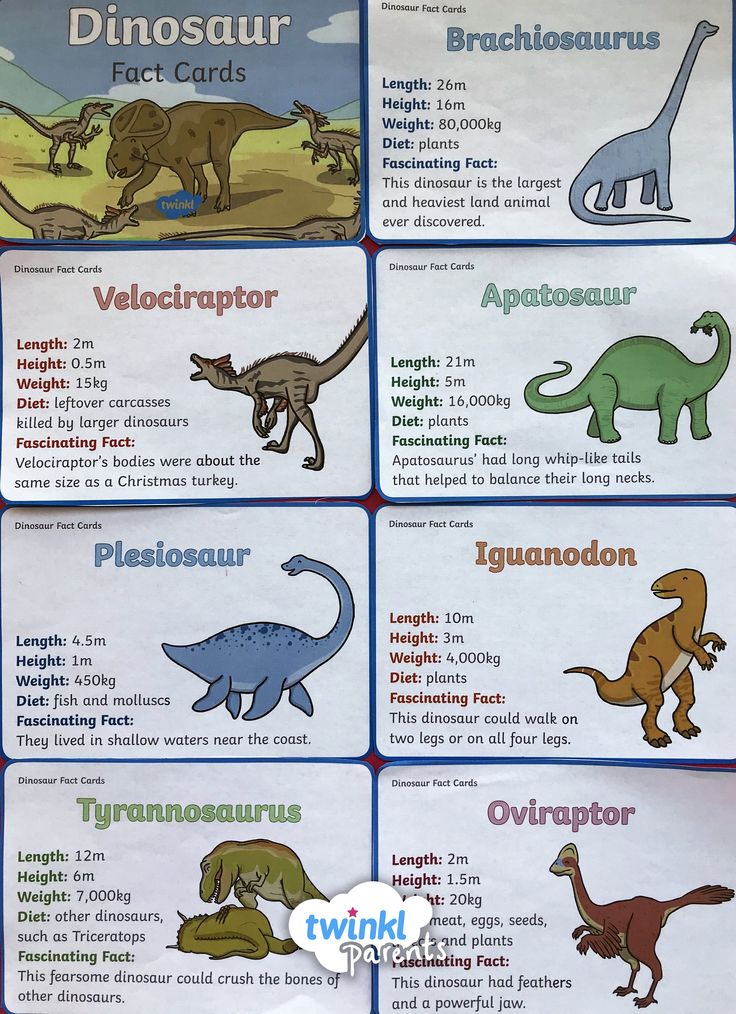 The poles of the planet were chained by glaciers, and the sea retreated, draining some parts of the bottom. Nevertheless, the diversity of living organisms has increased even more.
The poles of the planet were chained by glaciers, and the sea retreated, draining some parts of the bottom. Nevertheless, the diversity of living organisms has increased even more.
Trilobites and cephalopods reach their true flowering. There are more corals. Some colonial corals resembled complex honeycombs or miniature trees. But next to them, solitary corals also lived at the bottom. The largest of them rose like horns above the bottom surface. At this time, the history of bryozoans begins - animals very similar in appearance to corals.
Most modern echinoderms: starfish, sea urchins, brittle stars, holothurians appeared in the Ordovician. Their completely extinct relatives lived in the same seas - sea bubbles and sea buds.
Of the sedimentary rocks of the Ordovician, paleontologists know the most terrible predators of that time - racoscorpions, reaching a length of more than a meter. Scientists argue where the crustaceans originally lived: in the sea or in fresh water on land.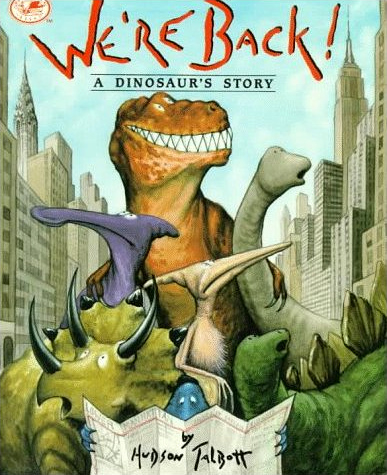 And since there are practically no remains of freshwater organisms of this age, they come to the conclusion that both options are possible.
And since there are practically no remains of freshwater organisms of this age, they come to the conclusion that both options are possible.
Animals of the Ordovician
They often preyed on the armored jawless animals that lived side by side with them. They were one of the first vertebrates that looked like fish. The shell, consisting of several plates, was their reliable protection against bloodthirsty predators. Like their Cambrian ancestors, they strained everything edible out of the mud, because they had neither teeth nor jaws. These flattened-bodied animals spent their entire lives crawling along the muddy bottom.
In all likelihood, life on land was still extremely poor. Only a few bacteria, fungi and unicellular algae settled at the water's edge, and the remote part of the land was uninhabited. But there were animals that dared to leave the water - these are the ancestors of modern centipedes, spiders and scorpions, however, they did not move far from the water, since there was simply no food there.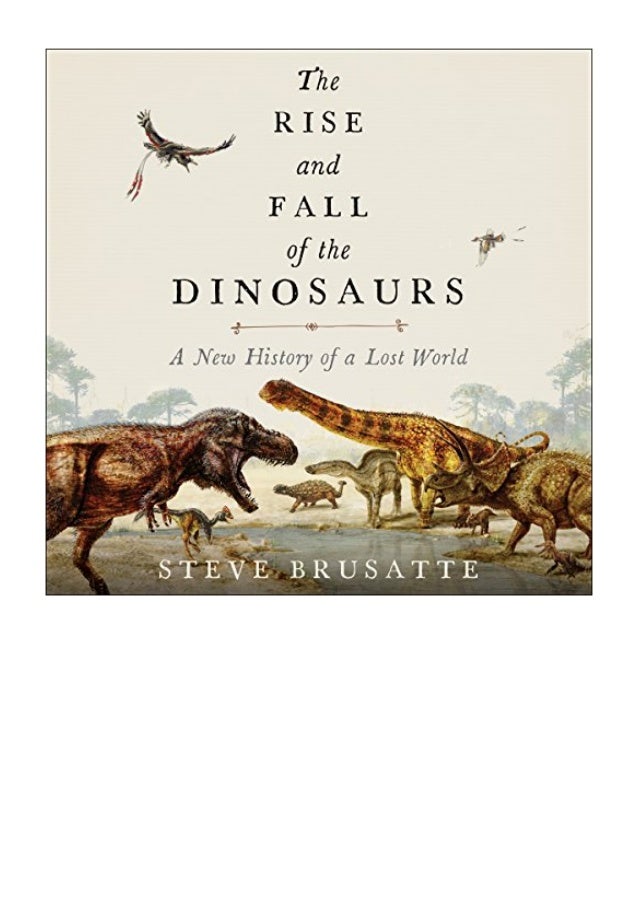
Reviving land
The third period of the Paleozoic - the Silurian, or Silurian, also named after the ancient British tribe, began about 440 million years ago. The climate still remained far from tropical. And yet, towards the end of the Silurian, it became a little warmer.
The ocean was full of life. Many marine life is experiencing a real flowering. The first primitive fish appeared in sea waters. But this is not the main event of the Silurian. Now our eyes will be riveted to land.
Armored fishes
The first fishes - armored placoderms - appeared at the end of the Silurian period about 420 million years ago.
In the Silurian, land spiders and centipedes were joined by the first land plants, not similar to algae, psilophytes, or rhinophytes. So the first conquest of land took place. The new inhabitants could not go far from the water for a long time, since the conditions on land were very different from the usual water ones.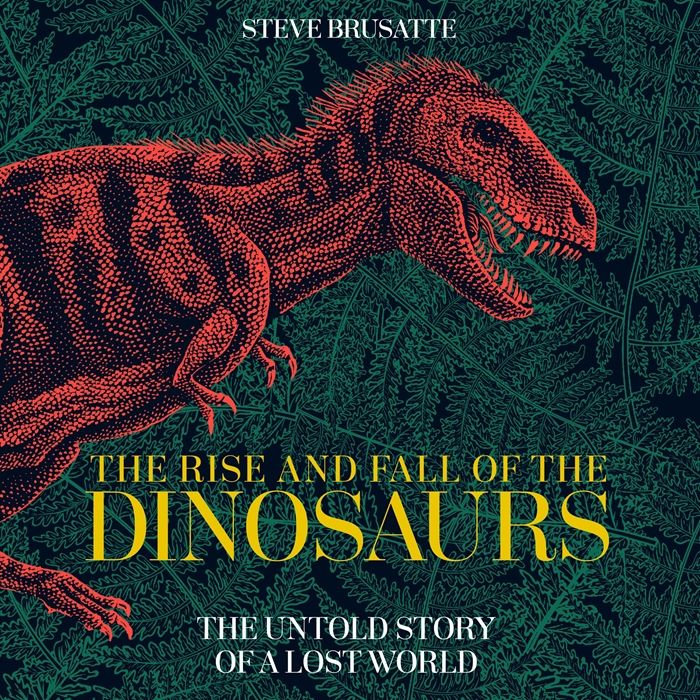
Silurian animals
Primitive psilophytes grew on the coasts. Some of them were more than half submerged in water, and only the tops of the shoots with spores rose above the water. Psilophytes did not yet have any true leaves or true roots. From the underground part of the shoot - rhizomes - thin rhizoids departed, with which the plants were held in the ground. Instead of leaves, there were formations resembling scales and thorns. Psilophytes became the progenitors of all modern and extinct higher plants. By the end of the Silurian, their first descendants appeared - club mosses, and possibly mosses.
Pisces and the second conquest of the land
At the beginning of the Devonian period, or Devonian (from Devonshire in the UK), - 410 million years ago - the face of the planet was different from the Silurian. Almost 30 million years have not passed without a trace. Many different marine life died out in the ocean - in particular, some echinoderms disappeared forever from the seabed: sea bladders and carpoids, part of the corals, the number of trilobites decreased. But there are also new organisms. The number of cephalopods increased especially sharply. Among the newly appeared conquerors of the seas were the first ammonites.
But there are also new organisms. The number of cephalopods increased especially sharply. Among the newly appeared conquerors of the seas were the first ammonites.
Devonian animals
But fish were the most numerous and diverse in the Devonian seas. No wonder the Devonian period is called the “age of fish”. Such diversity would be the envy of any angler. Many of them looked like clumsy medieval knights: they were chained, as if in armor, in thick shells, consisting of several bone plates. Every now and then in the ocean one could see fish of a bizarre shape with no less bizarre fins. Fish not only ate each other, but also became the prey of huge (sometimes about 9m) octopus cephalopods, resembling squids, but living in straight or twisted shells. These mollusks had the ability to move independently in the water column at high speed, so it was not difficult for them to catch fish.
But even more amazing events took place on land. From the first plants that came to land - psilophytes, in addition to the Silurian club mosses, mosses, horsetails, ferns, and even the first gymnosperms that reproduce by seeds, and not by spores, originated..jpg)











